Ideal CPU Temperature Range: What You Should Watch For
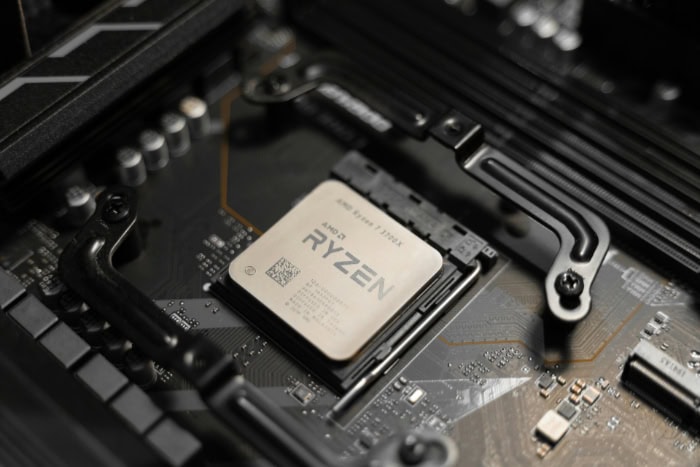
Keeping your CPU at an optimal temperature is essential for ensuring your system runs efficiently and remains stable under different workloads. As the brain of your computer, the CPU is constantly processing data, which generates heat.
Too much heat can lead to performance slowdowns, hardware damage, or even unexpected shutdowns. On the other hand, maintaining proper temperatures helps your system perform at its best and extends the life of your components.
CPU Temperature Ranges
Keeping track of your CPU temperature is essential for ensuring optimal performance and avoiding potential hardware damage. The CPU’s temperature fluctuates depending on what tasks the system is handling, so it’s important to distinguish between different operational states.
Idle and load temperatures provide a useful baseline for monitoring how your CPU is performing during everyday tasks versus more demanding activities.
Additionally, exceeding safe maximum temperatures can lead to performance throttling or even permanent damage if left unchecked.
Idle vs Load Temperatures
When your computer is idle, meaning it’s not running any intensive applications, the CPU should remain relatively cool.
Idle temperatures typically range between 30°C and 40°C, depending on factors like ambient room temperature, cooling solutions, and the efficiency of your case’s airflow. If your CPU is sitting above this range while idle, it may indicate an issue with cooling, such as poor airflow or an improperly seated cooler.
On the other hand, during load—when your CPU is under heavy stress from tasks like gaming, video editing, or rendering—temperatures naturally rise.
Under these conditions, a healthy CPU should operate within the 70°C to 80°C range. If temperatures consistently exceed 80°C during load, it’s a sign that adjustments to your cooling solution or fan setup may be necessary.
Operating within this temperature range ensures that the CPU is running efficiently without risking damage to itself or other components.
Safe Maximum Temperatures
While CPUs are built to handle high temperatures, there’s a limit to how much heat they can safely endure. Most modern CPUs have a maximum safe operating temperature, which is generally around 90°C or slightly higher, depending on the model.
Once this threshold is crossed, the CPU typically initiates thermal throttling as a protective measure.
CPU-Specific Temperature Variations
It’s important to note that different CPUs have varying temperature limits and optimal ranges. Intel and AMD CPUs, for example, can have different thermal characteristics due to differences in architecture, manufacturing process, and power consumption.
Intel CPUs tend to operate at slightly lower temperatures, with ideal load temperatures ranging from 60°C to 75°C for most models. AMD’s Ryzen processors, on the other hand, are designed to handle higher temperatures and can safely run at up to 80°C or more under load, depending on the specific model.
The Impact of Temperature on CPU Performance and Lifespan
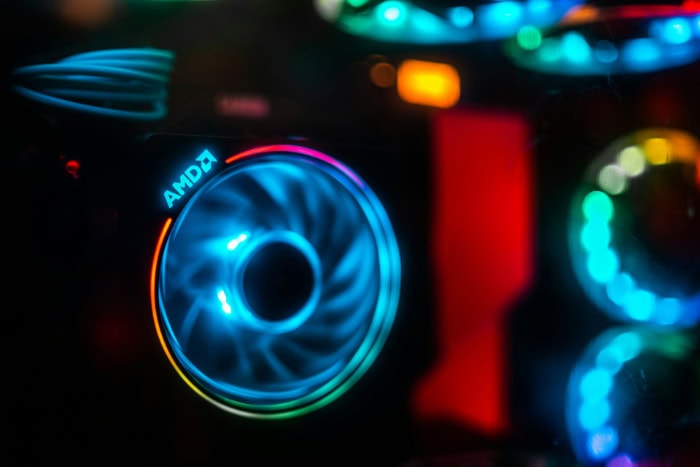
Temperature plays a significant role in the performance and overall lifespan of a CPU. While modern processors are designed with thermal protections to manage heat, running at consistently high temperatures can still have detrimental effects.
From performance slowdowns to long-term wear on the hardware, maintaining an appropriate temperature range is essential for keeping your system stable and efficient.
Thermal Throttling
Thermal throttling is a built-in safety measure that kicks in when a CPU reaches high temperatures, typically nearing its maximum operating threshold. When the CPU gets too hot, it automatically reduces its clock speed to lower the heat output and avoid damage.
While this mechanism prevents your processor from overheating, it comes at the cost of performance.
For example, during tasks like gaming or video editing—both of which require high CPU processing power—thermal throttling can cause noticeable slowdowns. Games may stutter, frame rates can drop, and rendering tasks may take longer than usual.
In extreme cases, the system might even become unresponsive for brief periods, disrupting the workflow. The more the CPU throttles, the less efficiently it operates, which can be particularly frustrating during intensive tasks that demand consistent performance.
While thermal throttling is an effective way to protect your CPU, it serves as a signal that your system’s cooling capabilities may need to be improved.
Running into thermal throttling frequently means your cooling solution isn’t keeping up with the heat generated, and adjustments to airflow, fan speed, or even the cooling system itself should be considered.
Long-Term Hardware Degradation
Consistently running a CPU at high temperatures can lead to gradual hardware degradation, shortening the overall lifespan of the processor. CPUs are designed to handle certain levels of thermal stress, but prolonged exposure to excessive heat accelerates wear on the internal components.
Over time, this can lead to reduced efficiency, increased power consumption, and in some cases, complete failure.
The risks extend beyond just the CPU. Other components in close proximity, such as the motherboard and GPU, can also be affected by excessive heat.
For instance, high CPU temperatures can contribute to increased ambient temperatures inside the case, causing other parts to overheat.
This can result in issues like VRM (voltage regulator module) degradation on the motherboard or performance throttling on the GPU, both of which can lead to instability and reduced component lifespans.
Keeping temperatures in check not only ensures peak performance but also helps preserve the integrity of your entire system, preventing costly repairs or replacements down the line.
System Stability
High CPU temperatures can cause more than just performance slowdowns—they can also lead to system instability. When a CPU overheats, it may trigger emergency shutdowns to prevent permanent damage.
These sudden shutdowns can occur without warning, leading to potential data loss and frustration.
Moreover, even if the system doesn’t shut down completely, overheating can cause frequent crashes, application errors, and random reboots, especially during high-load tasks.
These issues can become more frequent if high temperatures persist over an extended period, as the CPU struggles to maintain stability while running outside its ideal operating range.
Maintaining a stable system isn’t just about performance—it’s about ensuring that your computer can handle demanding workloads without crashing or freezing.
Factors That Influence CPU Temperatures
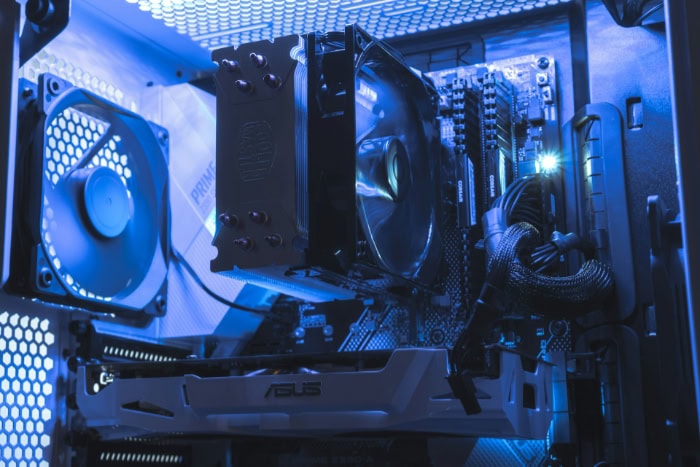
Several factors directly impact how hot your CPU runs, from the tasks you're performing to the physical environment of your computer.
While modern processors are designed to handle varying temperature ranges, keeping the CPU cool is essential for maintaining performance and preventing long-term damage
Workload Intensity
One of the most significant factors that influence CPU temperature is the type of workload your system is handling. Different activities put varying amounts of stress on the processor, which in turn generates different levels of heat.
For example, light tasks like web browsing, streaming videos, or word processing require minimal CPU power, and as a result, the CPU temperature remains relatively low.
In these situations, it’s common for the CPU to operate well below 40°C, especially if your system has adequate cooling installed.
However, more demanding tasks such as gaming, video editing, 3D rendering, and compiling large codebases place a heavy load on the CPU.
These activities require the processor to operate at higher clock speeds for sustained periods, often pushing temperatures into the 70°C to 80°C range or higher.
The more intense the workload, the more heat the CPU produces. Over time, if the cooling system is not adequate to dissipate this heat, temperatures can rise to unsafe levels, potentially triggering thermal throttling or shutdowns.
Understanding how different tasks affect CPU temperature can help you identify when your system might need better cooling or when you should consider taking a break from intensive activities to let the system cool down.
Ambient Room Temperature
The temperature of the room where your computer is located can have a direct influence on your CPU’s thermal performance. CPUs rely on air or liquid coolers to dissipate heat, and these systems work by transferring the heat away from the processor and into the surrounding environment.
If the surrounding environment (i.e., your room) is too warm, it becomes harder for the cooling system to do its job effectively.
For instance, if your room is at a comfortable 20°C to 25°C, your cooling system can efficiently keep the CPU temperature within a safe range. However, if the room temperature rises above 30°C, such as during hot summer days or in poorly ventilated spaces, the cooling system struggles to keep up.
As a result, CPU temperatures will rise, even if the system is idle or performing light tasks.
For this reason, it’s important to ensure that your computer is located in a well-ventilated, cool area. If you live in a particularly warm climate, consider using air conditioning or other cooling methods to help reduce ambient temperatures, especially during periods of heavy computer use.
Case Airflow and Ventilation
Another critical factor in managing CPU temperatures is the airflow and ventilation within your computer case. Proper airflow ensures that hot air is quickly expelled from the case and cool air is brought in to keep the components at safe operating temperatures.
A well-designed case with good airflow will typically have intake fans at the front or bottom, which pull cool air into the case, and exhaust fans at the rear or top, which push hot air out.
This constant flow of air helps maintain a stable temperature inside the case, allowing the CPU cooler to perform optimally.
However, if airflow is obstructed, either by poor case design, dust buildup, or improper cable management, hot air can become trapped inside the case, raising the overall temperature and forcing the CPU to work harder to stay cool.
Dust is a common enemy of proper airflow. Over time, dust can accumulate on fans, heatsinks, and other components, reducing their ability to dissipate heat efficiently.
Regular cleaning of your case and fans can go a long way in maintaining good airflow.
Cable management also plays an important role. A cluttered case with cables running in all directions can block airflow and trap heat inside the case.
Organizing your cables neatly and using ties to keep them out of the way of the fans can significantly improve ventilation.
Cooling Solutions for Managing CPU Temperatures
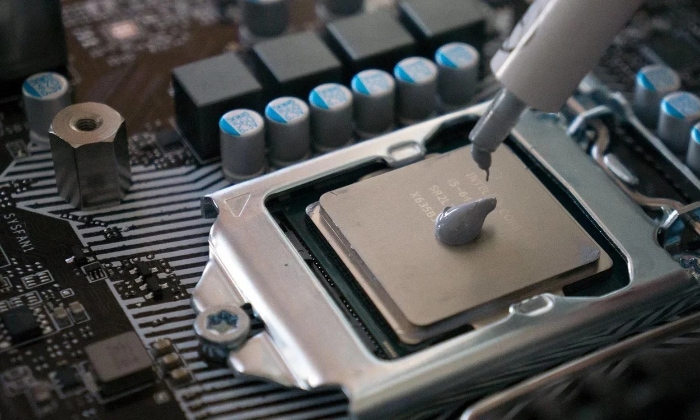
Efficient cooling is essential to prevent your CPU from overheating and ensure smooth performance, especially during tasks that put heavy demand on the processor. There are several cooling methods available, each with its own strengths and limitations.
Choosing the right cooling solution for your system can help you maintain ideal temperatures even under load.
Air Cooling vs Liquid Cooling
When it comes to CPU cooling, two primary methods dominate the market: air cooling and liquid cooling. Both approaches are effective, but the right choice depends on factors like your budget, system configuration, and performance needs.
Air cooling is the most common and cost-effective cooling solution. It uses a heatsink and fan to draw heat away from the CPU.
The heatsink, typically made from aluminum or copper, absorbs heat from the CPU, while the attached fan blows air across the fins to dissipate that heat. Stock coolers, which come bundled with many CPUs, are a basic form of air cooling.
While they are often sufficient for light to moderate workloads, they can struggle to keep temperatures in check during intensive tasks.
For those looking for more efficient air cooling, aftermarket air coolers offer larger heatsinks, more powerful fans, and better thermal performance overall.
These coolers are ideal for users who want improved cooling without the complexity of liquid cooling systems.
On the other hand, liquid cooling offers superior thermal performance by using a liquid (usually water or a non-conductive coolant) to transfer heat away from the CPU. There are two main types of liquid cooling systems: AIO (All-in-One) coolers and custom loops.
AIO systems are pre-assembled units that combine a pump, radiator, and tubing into one easy-to-install package. They are popular for users who want the benefits of liquid cooling without the hassle of setting up a custom loop.
Custom loops, while more expensive and complex, offer the best cooling performance, with the ability to cool not only the CPU but also other components like the GPU and motherboard.
Liquid cooling is generally more efficient than air cooling because liquid has a higher thermal conductivity than air, allowing it to absorb and dissipate heat more effectively.
However, it’s also more expensive and requires regular maintenance, especially in custom loops. For users pushing their CPUs to the limit with overclocking or high-performance tasks, liquid cooling can provide the extra thermal headroom needed to maintain stable temperatures.
Thermal Paste Application
Thermal paste plays a crucial role in ensuring efficient heat transfer from the CPU to the cooler. The surface of a CPU and the base of the cooler, despite being flat, have microscopic imperfections that trap air, which is a poor heat conductor.
Thermal paste fills in these gaps, creating a more efficient transfer of heat between the components.
Applying thermal paste correctly is essential for optimal CPU cooling. Too much or too little paste can hinder performance.
For most applications, a small, pea-sized amount of paste in the center of the CPU is enough. When the cooler is installed, the pressure will spread the paste evenly across the surface.
Be sure to avoid applying too much paste, as this can cause it to spill over the sides, potentially leading to poor heat transfer or even damaging other components.
Reapplying thermal paste periodically (every couple of years or so) is also recommended, as paste can dry out over time, reducing its effectiveness.
If you notice your CPU temperatures gradually creeping up despite no changes to your workload, it may be time to clean off the old thermal paste and apply a fresh layer.
Fan Management and Speed Control
Fans are the backbone of any cooling system, but their effectiveness can be enhanced through proper fan management and speed control. Most modern motherboards and cooling software allow users to manually adjust fan speeds or set fan curves based on temperature readings.
This gives you the flexibility to increase fan speeds during heavy workloads and reduce them when the system is idle, striking a balance between cooling efficiency and noise levels.
For example, during gaming or rendering, when the CPU is under load, increasing the fan speed ensures that heat is expelled more rapidly, keeping temperatures under control.
Conversely, when performing lighter tasks like browsing or word processing, fans can run at lower speeds to reduce noise without sacrificing cooling performance.
Many systems come with built-in fan control software, allowing you to automate this process by setting temperature thresholds.
Once the CPU reaches a certain temperature, the fans will automatically ramp up to keep the system cool.
Alternatively, if you prefer manual control, you can adjust fan speeds directly through the BIOS or third-party software tools, giving you the ability to fine-tune your system’s cooling based on your specific needs.
Monitoring and Maintaining Optimal CPU Temperatures
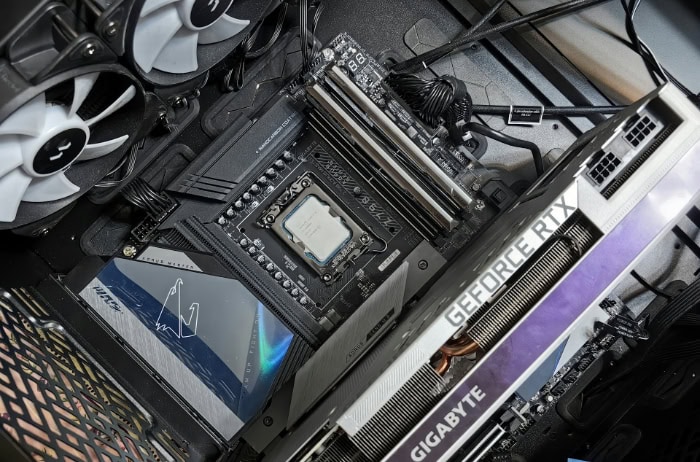
Keeping your CPU at an optimal temperature requires more than just installing the right cooling system—it also involves regular monitoring and maintenance to ensure your components are functioning properly.
By consistently tracking CPU temperatures and performing routine checks, you can prevent overheating issues before they become a problem.
If necessary, upgrading components or adjusting your system’s configuration can help manage persistent temperature spikes.
Temperature Monitoring Tools
One of the easiest ways to keep an eye on your CPU’s temperature is by using temperature monitoring tools. These software applications provide real-time data on your CPU’s temperature, allowing you to track how it fluctuates under different workloads.
HWMonitor is a popular choice among users for its simple interface and comprehensive monitoring capabilities. It tracks not only CPU temperatures but also other vital statistics such as fan speeds, GPU temperatures, and voltage levels, giving you a complete overview of your system’s health.
Another well-known tool is Core Temp, a lightweight application that focuses specifically on CPU temperature monitoring. It provides detailed information about each individual core’s temperature, making it useful for identifying if one core is running hotter than the others.
For those who want more advanced control over their system, MSI Afterburner is a great option. Originally designed for overclocking, it also features robust hardware monitoring, including CPU and GPU temperatures.
Its customizable interface allows you to set up on-screen displays, so you can monitor temps while gaming or running other demanding tasks without switching between windows.
Regularly using these tools can help you catch temperature spikes early and take action before they affect performance or cause hardware damage.
Routine Maintenance
Over time, dust and debris can accumulate inside your computer case, clogging fans and heatsinks, which reduces their ability to dissipate heat effectively. Performing routine maintenance is essential to ensuring that your cooling system continues to function optimally.
Start by regularly cleaning your fans and heatsinks. Dust buildup on fan blades reduces airflow, while dust trapped in heatsink fins prevents proper heat dissipation.
You can use compressed air to blow dust out of fans, heatsinks, and other components.
It’s important to perform this cleaning at least every few months, especially if your computer is located in a dusty environment or on the floor, where it’s more likely to collect debris.
In addition to cleaning, take a moment to check that all your fans are functioning properly. Sometimes, fans can become misaligned, slow down due to wear, or even stop working altogether.
Running temperature monitoring software can help you confirm that your fans are spinning at the appropriate speeds.
Lastly, ensure that all vents are free from obstructions. Blocked vents can trap hot air inside your case, raising the temperature of all components, including the CPU.
Upgrading Components
If you’ve cleaned your system and temperatures are still running higher than recommended, it might be time to consider upgrading your cooling components. One of the most impactful upgrades you can make is to improve your CPU cooler.
If you’re using a stock cooler and experiencing high temperatures, switching to an aftermarket air cooler or even a liquid cooling solution can significantly improve thermal performance.
Beyond upgrading the CPU cooler, improving case airflow can also make a notable difference. If your case doesn't have enough fans or the airflow design is inefficient, hot air can linger, leading to higher temperatures.
Adding more case fans or upgrading to a case designed with better airflow can help ensure that hot air is expelled from the system more efficiently. Fans with higher CFM (Cubic Feet per Minute) ratings can move more air, improving overall cooling.
Conclusion
Maintaining optimal CPU temperatures is crucial for achieving consistent performance and preventing long-term damage to your system. By keeping your CPU within safe temperature ranges, you can avoid thermal throttling, which negatively impacts performance during demanding tasks like gaming or video editing.
Factors such as workload intensity, ambient room temperature, and case airflow all play a role in influencing how hot your CPU runs.
Proper cooling solutions, whether through air or liquid cooling, along with correct thermal paste application, can make a significant difference in how effectively your system manages heat.
Regular monitoring using available tools and routine maintenance, like cleaning fans and heatsinks, help ensure your cooling system operates at its best. For those facing persistent high temperatures, upgrading components or improving case ventilation might be necessary.
By taking these steps, you can maintain a cool and stable system, ensuring that your CPU performs efficiently, even under heavy loads.


